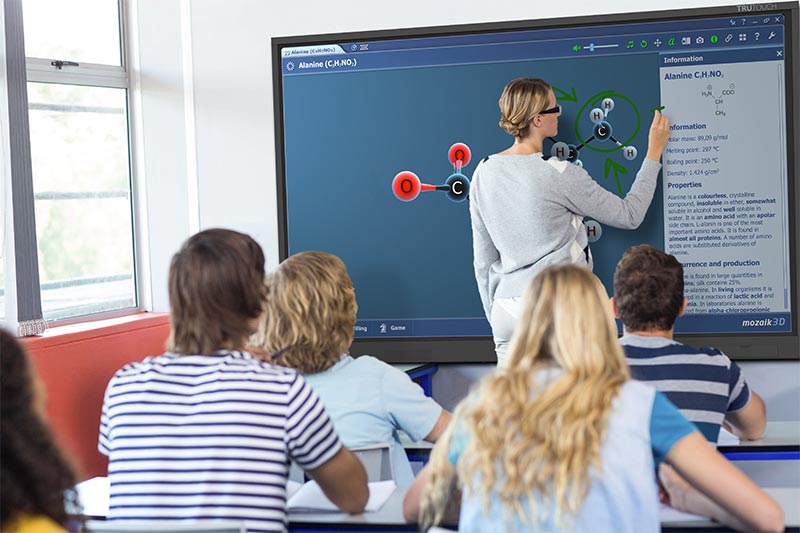How Top schools are preparing for Fall reopening
COVID-19 has created an unprecedented disruption to education systems across the globe. Without much warning, education underwent a massive change. After several weeks of physical school closures, many parents, students, and educators are desirous for a return to normalcy. Calls for re-opening school buildings closed during the COVID-19 pandemic have increased, and states and school districts are searching for solutions on how to provide quality learning in the next school year. During this uncertainty, there is a clear need to redesign our systems of learning for resiliency and adaptability.

No one can foresee what will happen in the fall. How and whether schools will reopen is unclear, and therefore school systems must think about a wide range of options to prepare for multiple scenarios. School buildings may re-open at a limited capacity, with some students learning from home and some in the classroom, or buildings may remain closed for long stretches at some point during the fall semester.
In addition to preparing for a future that remains unclear, schools must adjust their plans to prepare for possible second wave outbreaks. Schools must address new parental concerns about sending children out of the house. They need to make adjustments to their physical spaces and protocols within those spaces to address mandates for physical distancing and sanitation. Additionally, schools must prepare to address the disruption, both socio-emotionally and educationally, experienced by many students Never has there been such a demand for the delivery of higher-quality online or virtual instruction.
Interviews with officials at a range of educational institutions revealed various stages of thinking about and planning for a longer-term shift to virtual instruction. “By fall”, said Vickie S. Cook, executive director for online, professional and engaged learning at the University of Illinois at Springfield, “students and parents have the right to expect a high-quality education, in whatever modality it’s delivered. If it’s online, it shouldn’t ‘less than,’ especially when there’s time to address it.
As the need to adapt both pedagogically and infrastructurally becomes more and more pressing, new models for what school may look like in the fall are becoming popularized. Most recently, the concept of a hyflex classroom has gained significant attention. Hyflex stems from the term “hybrid flexible.” Developed by Dr. Brian Beatty at SFSU, a HyFlex course provides flexible participation, allowing students the choice of attending face-to-face class sessions or the option to complete course activities online without physically attending class.
For HyFlex to work, the classroom needs to be set up with, at minimum, a camera, videoconferencing capabilities and some way of interacting with the students at a distance. Live classes are streamed live and could be recorded for later playback. Professors interact with both in-person and synchronous online learners, through platforms such as Zoom or Teams. Class recordings might be complemented by asynchronous discussion boards and other collaborative tools in the campus learning management system. Advanced HyFlex classroom setups might include such technology as monitors around the edges of the classroom space that allow professors to see and address students who are participating live in the class at a distance. Perhaps the zenith of HyFlex are the Real Presence Experience (RPX) rooms that some schools have installed, with students at a distance all appearing life-size on a large screen in a specially designed classroom.
The appeal to some of the HyFlex Model is its flexibility. Courses could be placed in a regular campus classroom schedule. As social distancing requirements shift, the number of students in the face-to-face classroom environment can expand. Students who are unable to attend the in-class sessions can fully participate online, either synchronously or, in some cases, asynchronously. HyFlex, at least in its original conception, is designed for students who live on or close to campus. It was not meant as a solution for distance education. Instead, it was meant to give residential and commuter students the flexibility to attend class in person or remotely. This flexibility is attractive right now, when the effects of the pandemic are forcing schools to make decisions about how many students can fit into a classroom on campus, even if they live on or near campus. The conceptual flexibility of this model also enables it to function for students who may not be able to attend class on campus at all, which might be the case for some international students unable to return to the United States even if domestic students are able to live on campus.
For students, a HyFlex Model holds the potential of maximizing the opportunity to participate in a face-to-face learning experience under conditions of social distancing. How this is managed might vary from school to school. A professor might divide her class up into groups, with each group switching (or rotating, if there are more than two groups) between face-to-face and online instruction. Students might be given the opportunity to sign up for residential learning slots for each class session, up until the “safe” number of in-person spaces is taken. Or, in-class slots could be assigned randomly or prioritized along dimensions of student need. Or perhaps more importantly, students who test positive for COVID-19 and need to quarantine could attend class remotely while they are not showing symptoms. It’s important to note that the goal of HyFlex is two make both the online and in-person experiences equal. Participation in class is necessary regardless of where and how students attend. Online is not meant to be a diminished experience but an alternative. Class sessions are not meant to be passive observations of a class video stream, but rather to have fully interactive engagements, including Q&A, group work (if possible) and student presentations.
For schools, the HyFlex Model offers the potential to resume face-to-face teaching, despite uncertainties about the number of students that campus classrooms can safely accommodate. Class lectures could be delivered to a classroom of at least some students, enabling the sort of real-time student reactions and interactions on which professors appreciate (and which they often find harder to recreate in an online environment). Another advantage for faculty is that the structure of a HyFlex does not only have to involve students attending online. Faculty could be the ones who are remote (or shift between face-to-face and remote teaching as public health and personal circumstances change). They could teach from home to a classroom of in-person students and a group of online students at the same time. For faculty concerned about their health and safety, teaching at a distance would give them flexibility, while still giving students the opportunity to work together (albeit in a socially distanced manner).
In discussions with colleagues in leadership roles across the postsecondary ecosystem, the HyFlex Model is mentioned often. Some see it as a likely possibility for the fall, while others see it as a bridge too far. In an environment of both a strong (almost existential) desire to resume residential educational operations, combined with an almost total lack of certainty around what the public health situation will look like in the fall, a HyFlex approach holds out the promise of resuming classroom teaching and learning, while also being flexible enough to accommodate the full range of synchronous and asynchronous online learning modalities.
Source: https://www.insidehighered.com/blogs/learning-innovation/fall-scenario-13-hyflex-model



